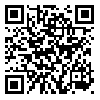Volume 15, Issue 7 (9-2015)
Modares Mechanical Engineering 2015, 15(7): 307-312 |
Back to browse issues page
Download citation:
BibTeX | RIS | EndNote | Medlars | ProCite | Reference Manager | RefWorks
Send citation to:



BibTeX | RIS | EndNote | Medlars | ProCite | Reference Manager | RefWorks
Send citation to:
Refahi Oskouei A. Using acoustic emission to assess mass fractions of composite materials based on wavelet packet analysis. Modares Mechanical Engineering 2015; 15 (7) :307-312
URL: http://mme.modares.ac.ir/article-15-4526-en.html
URL: http://mme.modares.ac.ir/article-15-4526-en.html
Abstract: (4971 Views)
Materials are often damaged during the process of detecting mass fractions by traditional methods. In this work, acoustic emission (AE) technology combined with wavelet packet analysis is used to evaluate the mass fractions of graphite/ epoxy composites. Attenuation characteristics of AE signals across the composites with different mass fractions are investigated. The AE signals are decomposed by wavelet packet technology to obtain the relationships between the energy and amplitude attenuation coefficients of feature wavelet packets and mass fractions as well. Furthermore, the relationship is validated by test samples. The results show that the lower proportion of graphite will correspond to the less attenuation. The attenuation characteristics of feature wavelet packets with the frequency range from 125 kHz to 171.85 kHz are more suitable for the detection of mass fractions than those of the original AE signal. The error of the graphite mass fraction calculated by the feature wavelet packet (1.9%) is lower than that of the original signal (4.75%). Therefore, the AE detection base on wavelet packet analysis is an ideal NDT method for evaluate mass fractions of composite.
Article Type: Research Article |
Subject:
Non Destvuctive Test
Received: 2015/04/20 | Accepted: 2015/05/15 | Published: 2015/06/9
Received: 2015/04/20 | Accepted: 2015/05/15 | Published: 2015/06/9
| Rights and permissions | |
 |
This work is licensed under a Creative Commons Attribution-NonCommercial 4.0 International License. |







